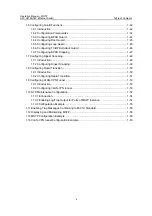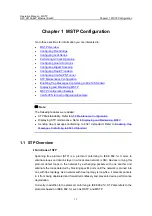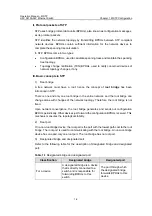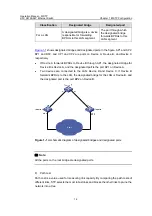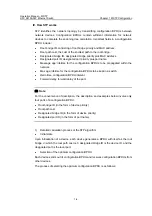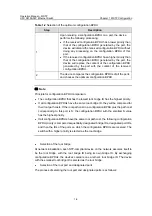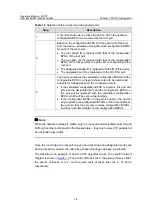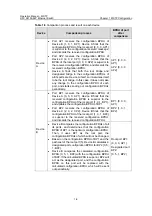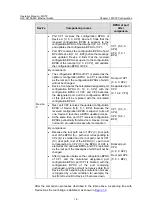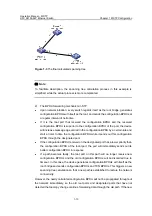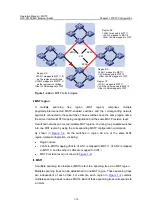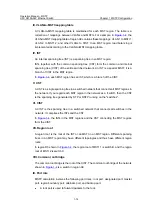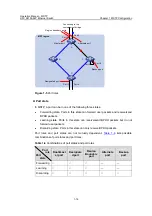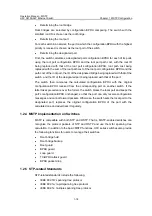
Operation Manual – MSTP
H3C S3100-52P Ethernet Switch
Chapter 1 MSTP Configuration
1-13
CST
BPDU
Region A0:
VLAN 1 mapped to MSTI 1
VLAN 2 mapped to MSTI 2
Other VLANs mapped to CIST
BPDU
BPDU
A
D
C
B
Region B0:
VLAN 1 mapped to MSTI 1
VLAN 2 mapped to MSTI 2
Other VLANs mapped to CIST
Region C0:
VLAN 1 mapped to MSTI 1
VLAN 2 and 3 mapped to MSTI 2
Other VLANs mapped to CIST
Region D0:
VLAN 1 mapped to MSTI 1, B
as the regional root bridge
VLAN 2 mapped to MSTI 2, C
as the regional root bridge
Other VLANs mapped to CIST
Figure 1-4
Basic MSTP terminologies
I. MST region
A multiple spanning tree region (MST region) comprises multiple
physically-interconnected MSTP-enabled switches and the corresponding network
segments connected to these switches. These switches have the same region name,
the same VLAN-to-MSTI mapping configuration and the same MSTP revision level.
A switched network can contain multiple MST regions. You can group multiple switches
into one MST region by using the corresponding MSTP configuration commands.
As shown in
, all the switches in region A0 are of the same MST
region-related configuration, including:
z
Region name
z
VLAN-to-MSTI mapping (that is, VLAN 1 is mapped to MSTI 1, VLAN 2 is mapped
to MSTI 2, and the other VLANs are mapped to CIST.)
z
MSTP revision level (not shown in
)
II. MSTI
A multiple spanning tree instance (MSTI) refers to a spanning tree in an MST region.
Multiple spanning trees can be established in one MST region. These spanning trees
are independent of each other. For example, each region in
contains
multiple spanning trees known as MSTIs. Each of these spanning trees corresponds to
a VLAN.


